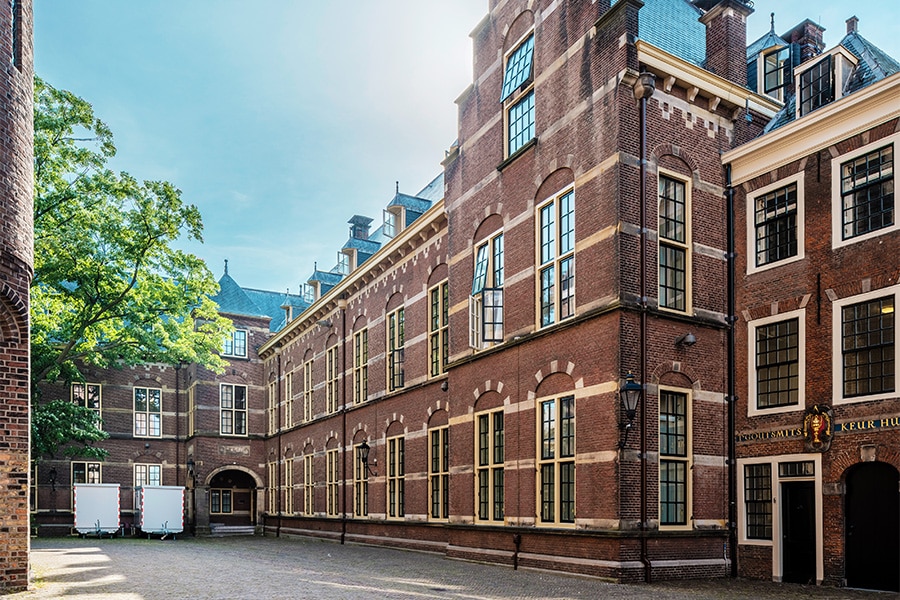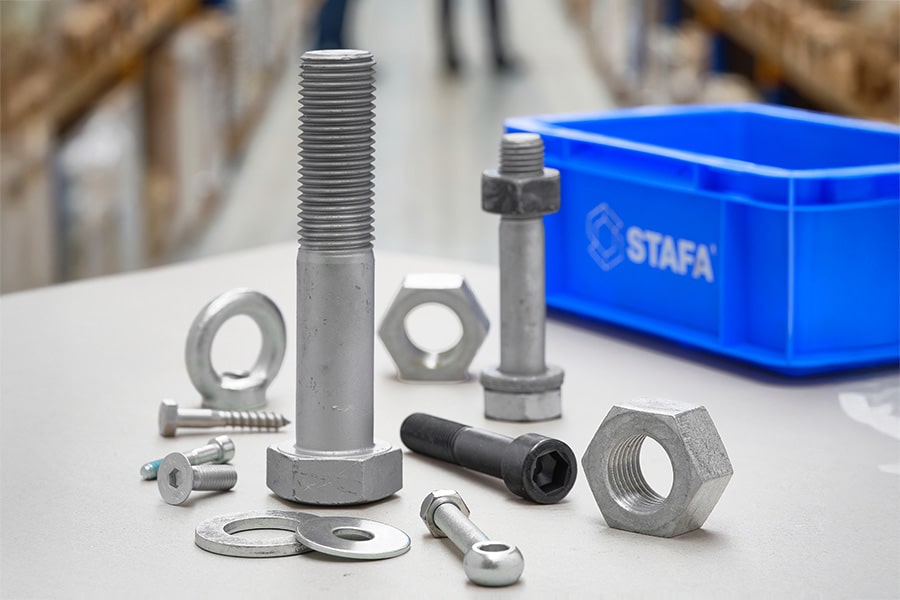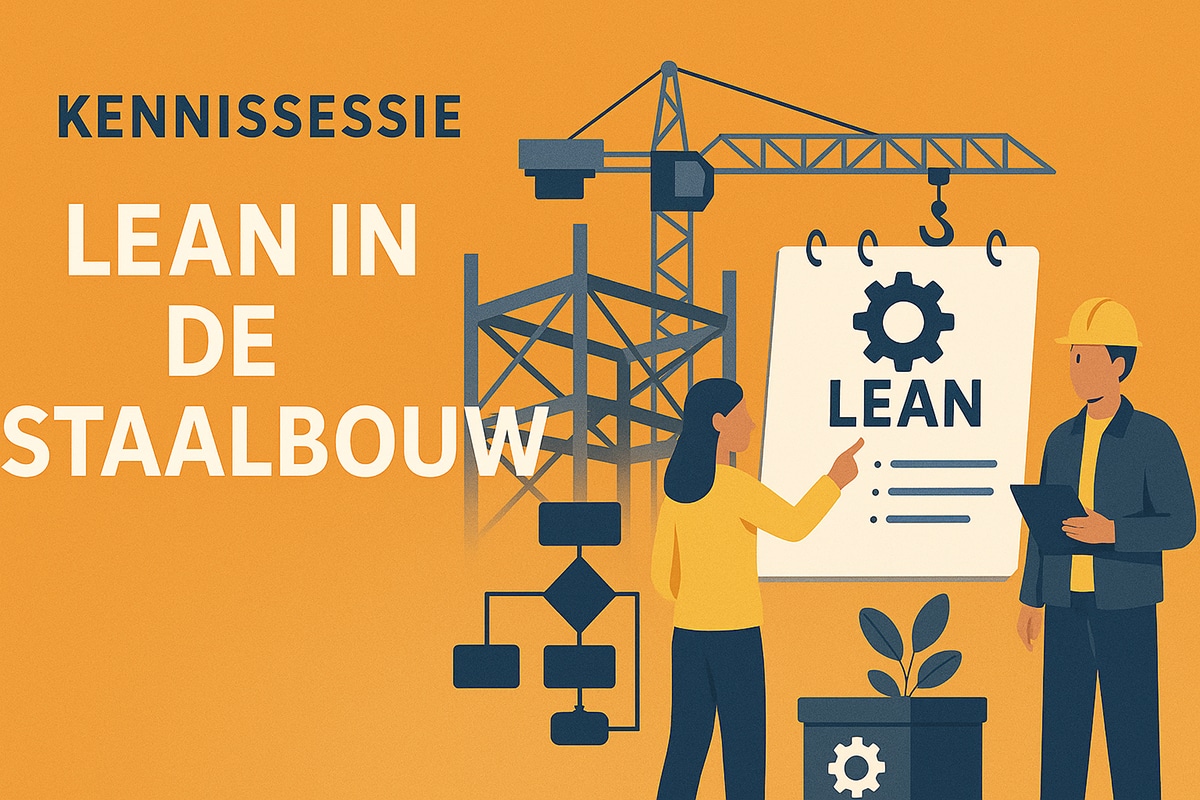
For the concrete sector, circularity is a priority
Concrete has a long lifespan and is fully recyclable
The precast concrete industry is keenly aware of the importance of circularity to finaly minimize the environmental impact of the construction process. It is therefore crucial to design buildings and elements with the longest possible lifespan, to use as few new raw materials as possible and to choose high-quality recycled materials. The editors of Concrete & Steel Construction sat down with Stef Maas, director of FEBE, to discuss this interesting subject.
Text | Johan Debaere

Movable precast columns by Valcke. (Image: Enjoy Concrete & image collective)
Long lifespan
"The simplest way to reduce environmental impact is to extend the service life," said Maas. "Thanks to thorough quality control, we produce precast concrete elements that cannot be outdone in terms of service life. Moreover, precast concrete buildings tend to be flexible, adaptable, robust and resilient, allowing them to evolve with the demands and challenges of the times. Thanks to the particularly large spans of precast concrete elements - sometimes even from façade to façade - the walls are non-bearing and moveable at any time. Thus, an office building can become a residential tower with stores and service flats within 25 years. Moreover, it is perfectly possible to modify buildings - replace a facade, for example - without mortgaging the rest of the structure. Thanks to its robustness and resilience, precast concrete can cope well with the effects of climate change, such as higher temperatures, violent storms, floods, forest fires, ....; parameters unknown at the design stage."

This project was winner of the 2018 FEBE Elements Awards in the Outstanding Precast category. (Image: Enjoy Concrete & image collective)
Dematerialization and (multiple) recycling
Dematerialization is characteristic of the precast concrete industry, he says. "We often talk about replacing raw materials with know-how, because the more we control the behavior of our elements, the better we can punch them out without compromising functionality and durability. Today we can make columns stronger and slimmer and produce floors that are thinner and higher performing than ever before. Many precast concrete manufacturers have also been breaking proven or rejected elements for years to reuse them. In this way, no raw materials are lost and there is high-quality reuse. Concrete technologists know perfectly how to use a maximum of recycled materials without sacrificing concrete performance. However, reusing our own recyclate does not get us very far and other sources must be used. Therefore, we must pay attention to the use of high-quality recycled materials that meet the raw material requirements within our industry. But also to "new" raw materials, mostly from other industrial sectors, which are carefully processed for use in (precast) concrete. It is important for the environment and the image of the sector that fitness for use and multiple recycling continue to be considered as basic criteria in the assessment of new and recycled materials. Today we still too often see initiatives outside our sector that do not pass the test of second recycling."

In the Le Globe project in Knokke, the facade was replaced, but the underlying load-bearing structure was retained. This project is proof that (precast) concrete structures are adaptable.
(Image: Enjoy Concrete & image collective)
A concrete sector in full swing
"As a federation, we want to contribute to a regulatory framework that creates space for a higher proportion of recycled materials in concrete," Maas said. "We also pay attention to the reduction of non-recyclable packaging and the creation of EPDs (Environmental Product Declarations), which give a full picture of the environmental impact of our products. Our members make many efforts to achieve quality, recyclable products with a long lifespan and are fully committed to circularity. One of many examples: specialists in drainage and paving developed a full range of products with the aim of not interrupting the cycle of rainwater. Permeable paving in precast concrete ensures that people no longer have to choose between the comfort of a paved surface and the drainage capacity of an unpaved surface. Permeable pipes, in turn, ensure that water is given time to soak into the soil. In addition, great efforts are being made to improve recycling. For example, granulates and sand are now being separated from the cement stone and the latter is pulverized into a reusable powder with hydraulic properties. Concrete is thus becoming fully circular."
The 'ideal world' is getting closer
"In an ideal world, we want to know the 'history' of a building and of each element in particular. BIM plays an important role here, but this model needs to be fed. The members of FEBE already play their role here, but for proper follow-up, all actors must do this over the entire life cycle. That, too, is a challenge. Meanwhile, we are looking for ways that allow our building elements themselves to communicate with the model. Sensors are becoming cheaper and more functional, so that this 'ideal world' is no longer so far away."



